DACF Home → Bureaus & Programs → Maine Natural Areas Program → Communities, Plants, and Animals → Invasive Plants → Asiatic Bittersweet
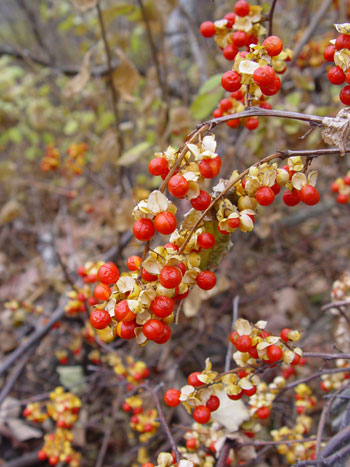 Asiatic bittersweet fruit
Asiatic bittersweet fruit
Asiatic Bittersweet
Celastrus orbiculatus
2019 Status in Maine: Widespread. Severely Invasive.
Description: Perennial, deciduous, woody vine. Twines around mature trees and climbs high into the canopy, or sprawls over low-growing vegetation. Leaves: Simple, alternate, round to somewhat elliptical, 2-4" long, with wavy or weakly toothed edges, turning yellow in fall. Leaves abruptly pointed at tips or in sun more tapering toward pointed tip. Flowers: Green-yellow, 5-petaled, small, clustered in leaf axils, ~June. Fruit: Distinctive yellow aril covers orange-red seed. Fruits mature in fall and persist into winter. Bark: Light brown bark with raised light tan lenticels. Roots: bright orange.
Native range: Japan, China, Korea. How arrived in U.S.: As an ornamental.
Reproduction: By seed and vegetatively. Plants are usually dioecious; males do not produce fruit. Fruits are eaten and dispersed by birds and small mammals, or by careless disposal of bittersweet wreaths. Seeds are viable for about one year. New shoots may sprout from the root crown, and root fragments may also regenerate
Habitat: Forests, forest edges, woodlands, old fields, beaches, and dunes. Moderately shade tolerant; more productive in sun. Tolerates dry to moist soils.
Similar native species: American bittersweet (C. scandens), uncommon in Maine, is very similar byt only has flowers and fruit at vine tips, and usually has leaves twice as long as wide. Grape (Vitis spp.) will also grow into tree canopies. Grape bark has a peeling, shredded appearance and leaves are larger and palmately lobed.
Similar non-native species: None in our area.
Documented Ecological Impacts
- Changes in soil chemistry and leaf litter decomposition rates were seen in areas with Asiatic bittersweet compared to areas without it, across different site conditions and soil types. (Leicht-Young, et al. 2009. The Amercan Midland Naturalist 161 (2):219-231)
- Asiatic bittersweet interrupted old-field succession and resulted in a vine-dominated community rather than the expected forest vegetation. (Fike and Niering. 1999. Journal of Vegetation Science 10:483-492)
- Thickets of Asiatic bittersweet have the potential to harbor increased tick populations and other invasive species. Asiatic bittersweet can also serve as an alternate host for a bacterium that can transmit several crop diseases and tree diseases such as variegated chlorosis. (Fryer, J.L. 2011. Celastrus orbiculatus. In: Fire Effects Information System. U.S. Department of Agriculture, Forest Service)
Fact Sheets and Identification Links
- Vermont Fact Sheet and Species Spotlight for Asiatic Bittersweet
- City of Auburn Conservation Working Group and Lewiston/Auburn Community Forest Board Identification and Control Video
- Purdue University Cooperative Extension, Indiana, Identification Video (3:30)
- Go Botany page for Celastrus orbiculatus
- Michigan DNR Best Control Practices Asiatic Bittersweet
- NH Department of Agriculture, Markets & Food Asiatic Bittersweet Control Guidelines
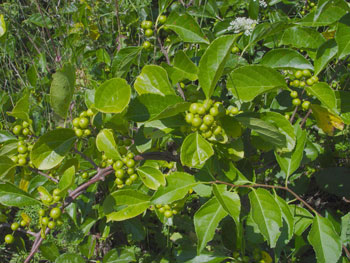 Asiatic bittersweet unripe fruit
Asiatic bittersweet unripe fruit
Control Methods
Very small plants and seedlings may be pulled up by the roots when soil is moist; larger vines can be cut, but agressive re-sprouting will occur.* Cut larger vines at chest height and also at ankle height to prevent new vines climbing up old ones (you can also treat the rooted part of the vine with cut-stem herbicide if desired). Persistent cutting alone, multiple times during the growing season over several years, may kill the plant, but diligence is required (at least 6x/yr for 3 yrs is suggested). Vines can be left to die in the canopy; pulling the vines from the trees can cause additional damage. Mowing can prevent seedlings from establishing. Herbicides† are effective as foliar applications (triclopyr solution, foliar glyphosate not as effective on this species), cut-stump applications (glyphosate or triclopyr solution applied immediately after cutting except during early spring), or basal bark application at any time of year (for stems < 6" diameter, triclopyr in bark oil). For dense thicket-type growth and very large infestations, cut or bush-hog all vines at mid-summer, then foliar spray triclopyr solution the following summer before flowering when plant height is lower and less herbicide is needed.
* Correctly dispose of all plant parts↵ † Follow all label directions when using herbicides↵Control Technique Video Demonstrations
- University of Minnesota Cooperative Extension (4:40), hand tools and stump herbicide application
Please email invasives.mnap@maine.gov if you have questions about invasive species in Maine
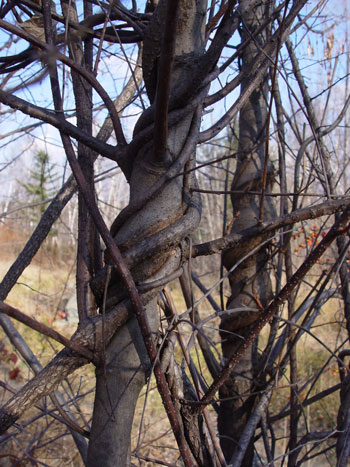 Asiatic bittersweet vines strangling a tree
Asiatic bittersweet vines strangling a tree
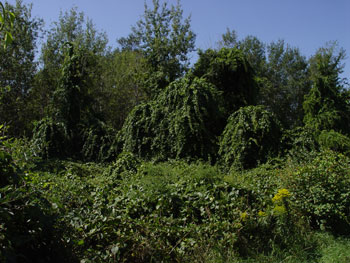 Asiatic bittersweet infestation at Cape Elizabeth
Asiatic bittersweet infestation at Cape Elizabeth
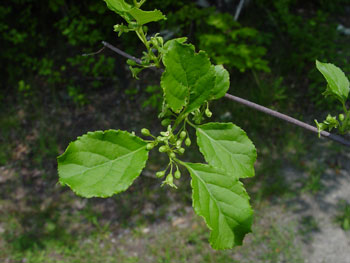 Asiatic bittersweet branch
Asiatic bittersweet branch
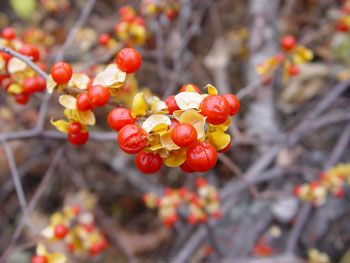 Asiatic bittersweet fruit
Asiatic bittersweet fruit
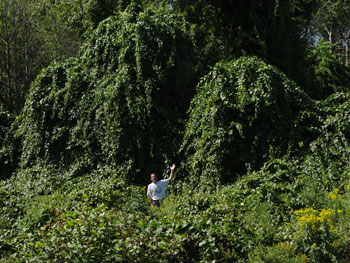 Asiatic bittersweet infestation at Cape Elizabeth
Asiatic bittersweet infestation at Cape Elizabeth
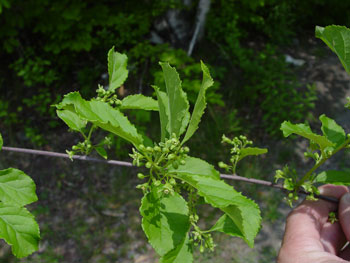 Asiatic bittersweet branch
Asiatic bittersweet branch
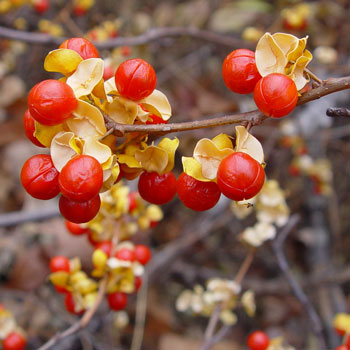 Asiatic bittersweet fruit
Asiatic bittersweet fruit
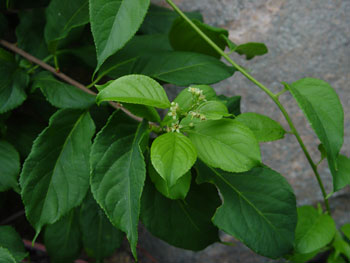 NATIVE American bittersweet-note terminal flower cluster
NATIVE American bittersweet-note terminal flower cluster
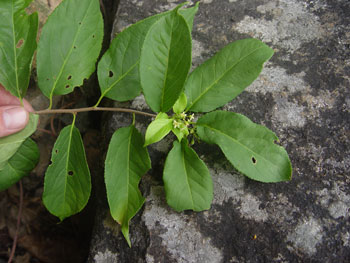 NATIVE American bittersweet-note terminal flower cluster
NATIVE American bittersweet-note terminal flower cluster
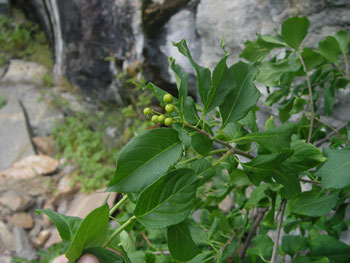 NATIVE American bittersweet-note terminal unripe fruit
NATIVE American bittersweet-note terminal unripe fruit